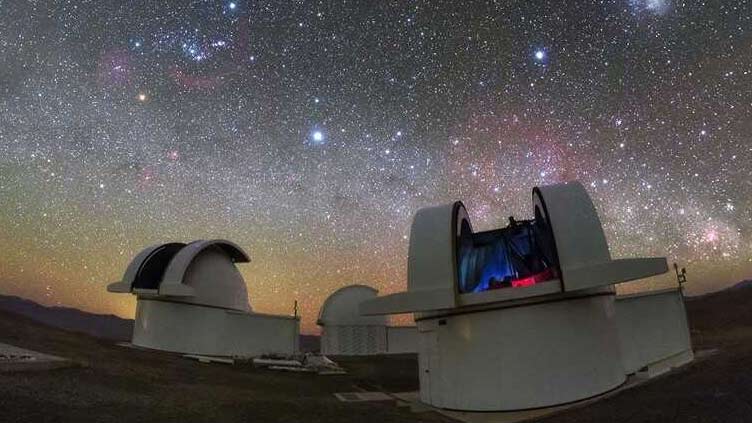Two new 'super-Earth' planets just 100 light-years away discovered

Technology
Two new 'super-Earth' planets just 100 light-years away discovered
(Web Desk) – An international team of scientists announced has that they have discovered two new "super-Earth" planets just 100 light-years away. Both of them are significantly larger than our own planet — and one of them may even be suitable for life.
Super-Earths are a unique class of exoplanet in the solar system that are more massive than our planet but lighter than the ice giants, according to NASA. They are made by some combination of gas and rock and can get up to 10 times the size of Earth s mass.
The findings, discovered with NASA s Transiting Exoplanet Survey Satellite and the University of Liège s Search for Habitable Planets Eclipsing Ultra-Cool Stars (SPECULOOS), will be published in the journal Astronomy and Astrophysics.
Both newly-found planets circle LP 890-9, a "relatively low activity" red dwarf star, which according to NASA typically has a narrow habitable zone.
The first planet, LP 890-9b or TOI-4306b, was first captured by NASA s satellite and was later confirmed to be an exoplanet by SPECULOOS. It is about 30% larger than our planet with a radius of more than 5,200 miles and orbits its sun in just 2.7 days.
But it s a second planet previously unknown to scientists that has proven to be the most intriguing. LP 890-9c, or SPECULOOS-2c, lies slightly farther away from its star than the first planet. It s about 40% bigger than Earth with a radius of more than 5,400 miles and takes about three times as long as its neighboring planet to orbit its star.
— ULiege Research & Innovation (@ULiegeRecherche) September 7, 2022
According to researchers, that orbit duration is within the star s habitable zone.
"Although this planet orbits very close to its star, at a distance about 10 times shorter than that of Mercury around our sun, the amount of stellar irradiation it receives is still low, and could allow the presence of liquid water on the planet s surface, provided it has a sufficient atmosphere," study co-author Francisco Pozuelos said.
That s because the planet s star, LP 890-9, is about 6.5 times smaller and is roughly half as cool temperature-wise as our sun, he explained.


